Seamus McGarvey BSC ASC deploys 35mm to artistic and cost-effective advantage on 'The Accountant,' 'Nocturnal Animals' and 'Kitty'
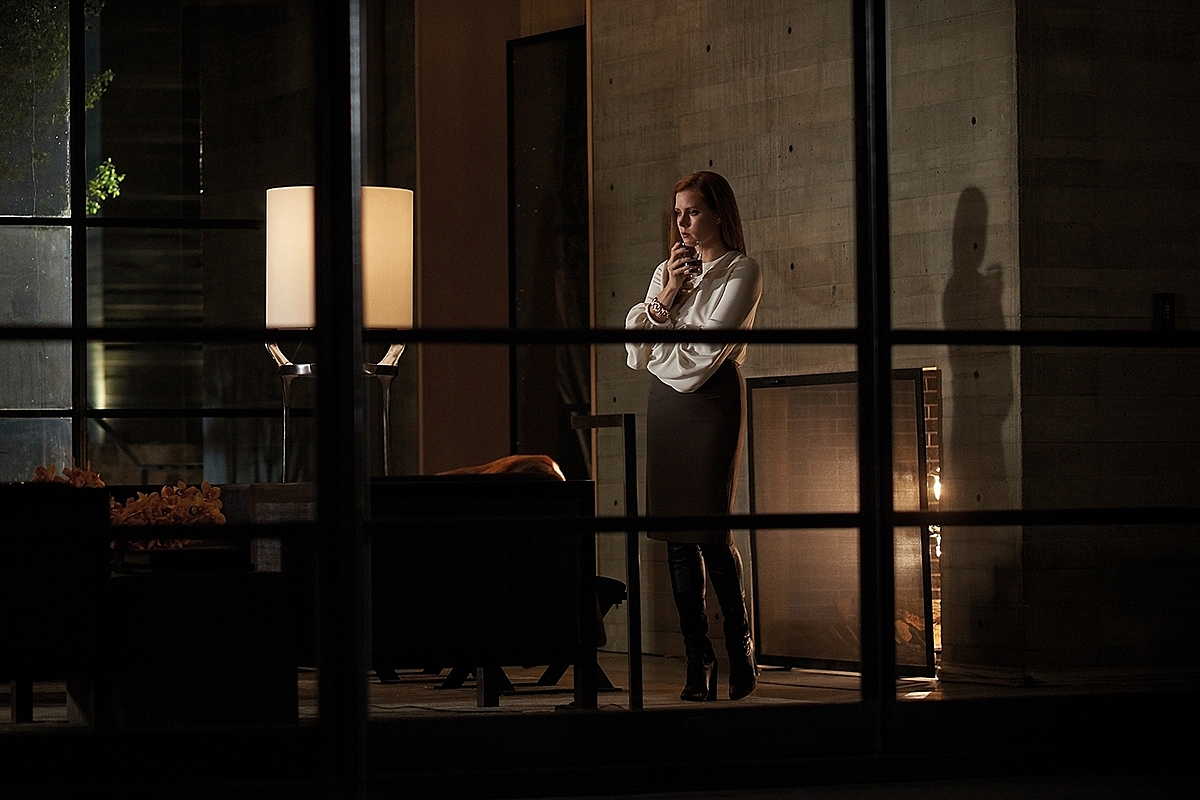
AMY ADAMS in pensive mood in Tom Ford’s "Nocturnal Animals." Image copyright Focus Features/Universal Pictures
2015 was a busy year for cinematographer Seamus McGarvey BSC ASC, as he shot three very different films, back-to-back, on 35mm film: the intense action blockbuster The Accountant, ‘colour noir’ indie thriller Nocturnal Animals, plus the short feline frolic Kitty.
“The thing I absolutely adore about film is how incredibly versatile it is,” says the double Oscar-nominated McGarvey. “I grew up learning how to shoot on celluloid, and I cherish how it is the anchor, the standard starting point, you can use to create any look whatsoever. These three productions needed very different aesthetic results, and I knew film would support me in these disparate adventures.”
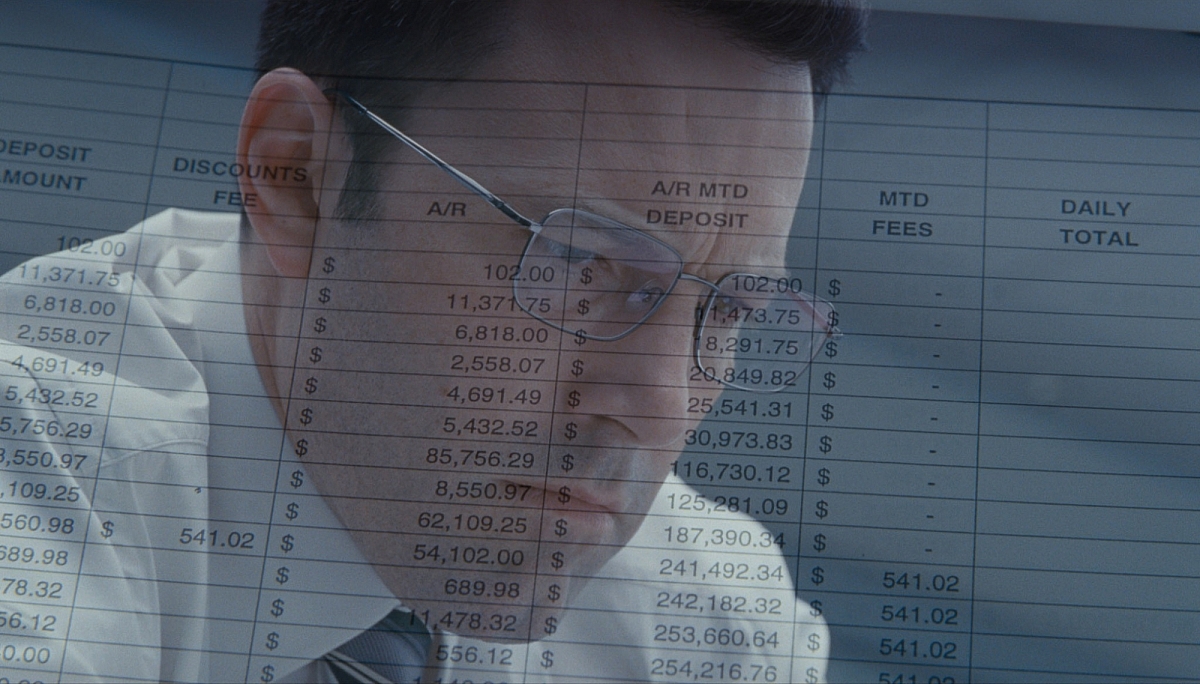
Ben Affleck as Christian Wolff in "THE ACCOUNTANT." Photo: Chuck Zlotnick © 2016 Warner Bros. Entertainment Inc. and Ratpac-Dune Entertainment LLC.
Directed by Gavin O’Connor, Warner Bros.’ The Accountant, stars Ben Affleck as a math savant and crackshot marksman, who cooks the books for dangerous crime syndicates. The movie was framed widescreen 2:39:1, and was captured on VISION3 500T Color Negative Film 5219 exclusively, using Panavision’s Panaflex XL camera and Panavision Primo prime lenses and zooms.
“Along with having a lot of low-light and night-time scenes, the overall aesthetic called for a sparse, stripped-down visual treatment that would mirror the autistic orderliness of the hero’s world,” McGarvey explains. “So along with keeping the sets structured and free from unnecessary distractions, we also drained-out the colour and stopped down the lenses to elevate the depth-of-field and sharpen the image. The action gets gradually more and more tense, and the look had to evolve into a more textured and gritty feel. The beauty of Kodak 5219 500T negative is the latitude it gives you on-set, and later in the colour grade, to handle the different looks, push the grain and contrast, and deliver a harmonised result.”
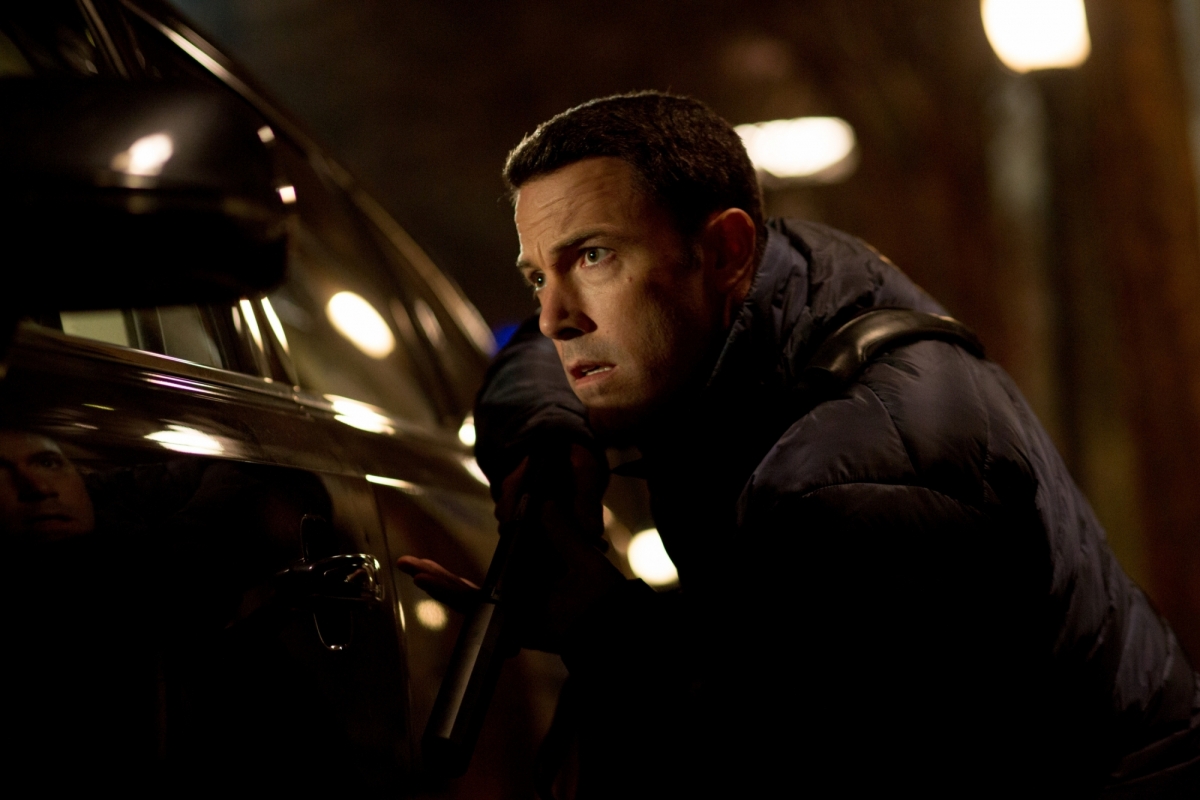
Ben Affleck as Christian Wolff in "THE ACCOUNTANT." Photo: Chuck Zlotnick© 2016 Warner Bros. Entertainment Inc. and Ratpac-Dune Entertainment LLC.
McGarvey also notes that the financials of shooting The Accountant on film added up favourably against digital. “With the careful management of shooting ratios and the natural discipline that comes with shooting on film, I demonstrated to the producers how cost-effective film can be versus digital. The handling and post-processing of terabytes of data from the digital capture world can be unseen, costly and time-consuming ventures downstream. With this in mind, the producers quickly saw overall that shooting on film can be just as cost-effective, if not cheaper, than digital, and were very supportive in the decision to greenlight the production on 35mm. Indeed, it set a pleasing precedent to take into future productions when the debate revolves around the costs of shooting film versus digital.”
Visually, McGarvey’s next assignment, Tom Ford’s stylish and highly-praised Nocturnal Animals, proved a different kettle of fish altogether. A film production from the get-go, the story focuses on Susan (Amy Adams), an LA art gallery proprietor, who becomes haunted by a violent manuscript penned by her ex-husband Tom (Jake Gyllenhaal), which she decodes as being a veiled threat as well as a symbolic revenge tale. The binary-narrative – where powerful real and fictional stories run in parallel, sometimes interweaving – involved McGarvey conjuring-up a multitude of dynamic looks.
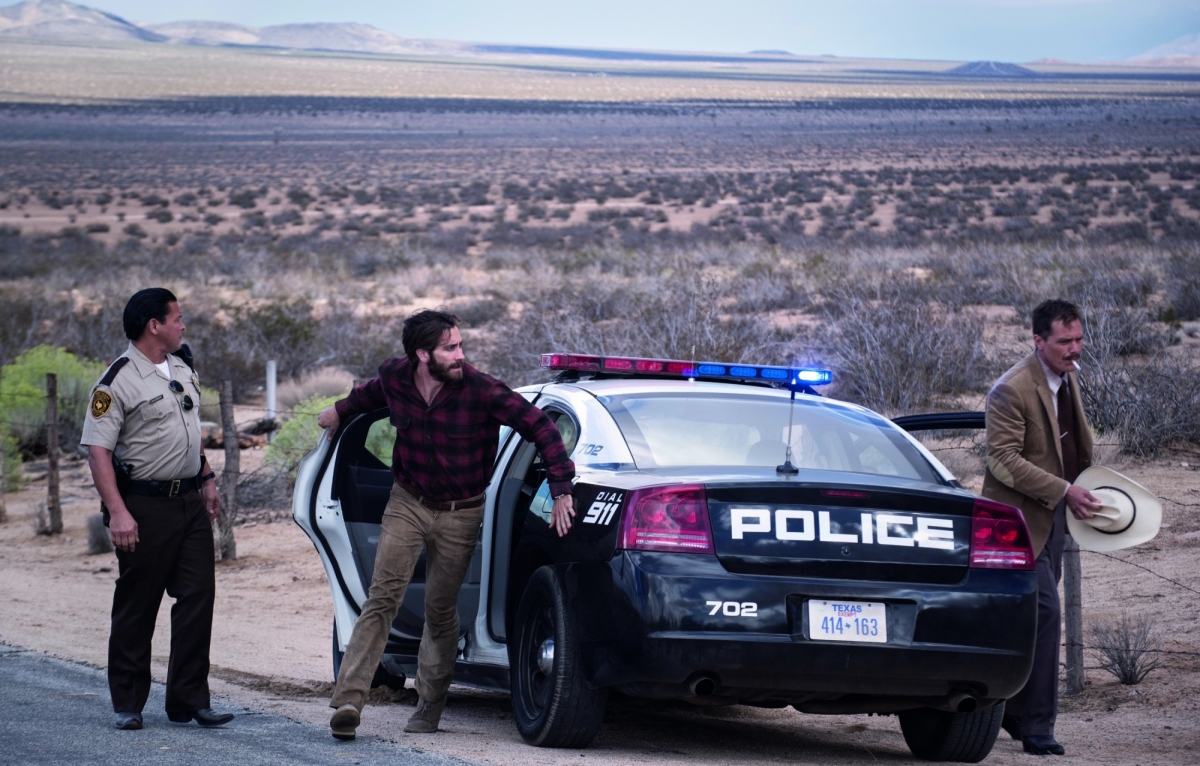
Jake Gyllenhaal in Tom Ford’s "NOCTURNAL ANIMALS" © Focus Features. Image copyright Focus Features/Universal Pictures
“It’s probably the one of the best films I have ever shot, and I can’t wait for people to see it,” he enthuses. “At the core of the film there’s the wan, sterile, set-up in LA that co-exists with an extremely vivid, film-within-a-film, nightmare journey across the desert, along with flashback sequences to the younger, happier days of the protagonists.”
Shooting spherical 2.35:1, again with the Panaflex XL and Panavision glass, McGarvey selected VISION3 200T Color Negative Film 5213 and VISION3 500T Color Negative Film 5219 to match the various settings of the action.
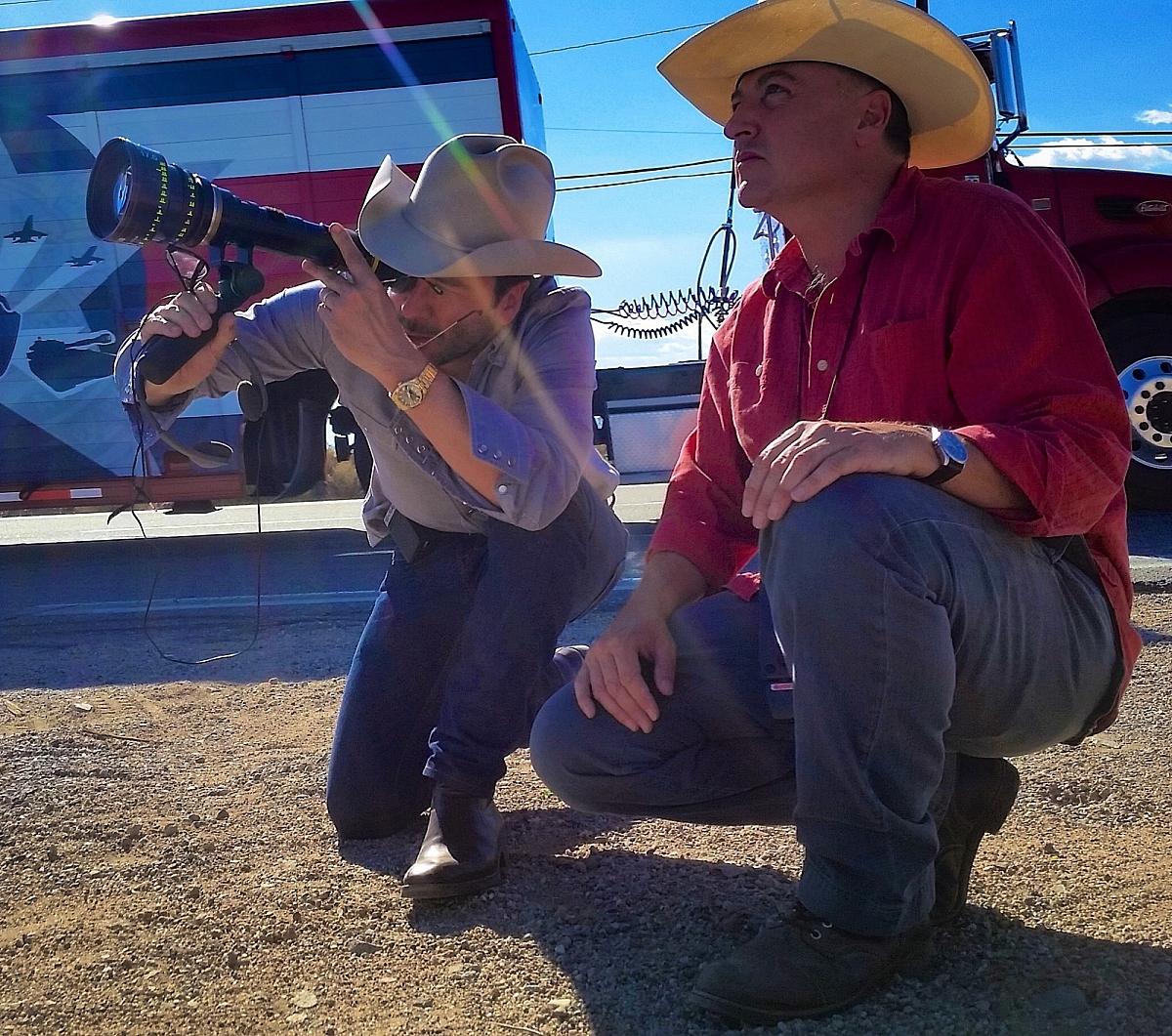
Director Tom Ford eyes a possible camera position on "NOCTURNAL ANIMALS" with cinematographer Seamus McGarvey BSC ASC. Photo: David Emmerichs. Focus Features/Universal Pictures
As he explains: “I used the 200T on daytime exterior wide shots of the desert. I knew the extended latitude of the stock would easily handle the extreme sunshine, and hold highlight details with a beautiful, smooth and creamy bloom. Knowing that we’d be shooting at night – probably 85% of the movie – I wanted the fastest stock I could get. Unlike digital, where you often have to subtract the light, with film you paint the negative out of a black canvas in an additive, artistic process. For the ‘colour noir’ moments of the movie Kodak 5219 500T was the perfect stock to render the contrast of the pronounced lighting, and for the saturated red and deep green colours that we enhanced on-set with the liberal use of gels. On the dark, highway scene, where I used BB lights to illuminate over a mile of road, the 500T gave me enough F-stop to achieve exactly the eerie levels of obscurity I intended. It also supported the misty and anaemic look of Susan’s spartan LA world, and it combined nicely withTiffen Glimmerglass, when I softened the image and the actors for the optimistic flashback sequences of Susan and Tom in their college days.”
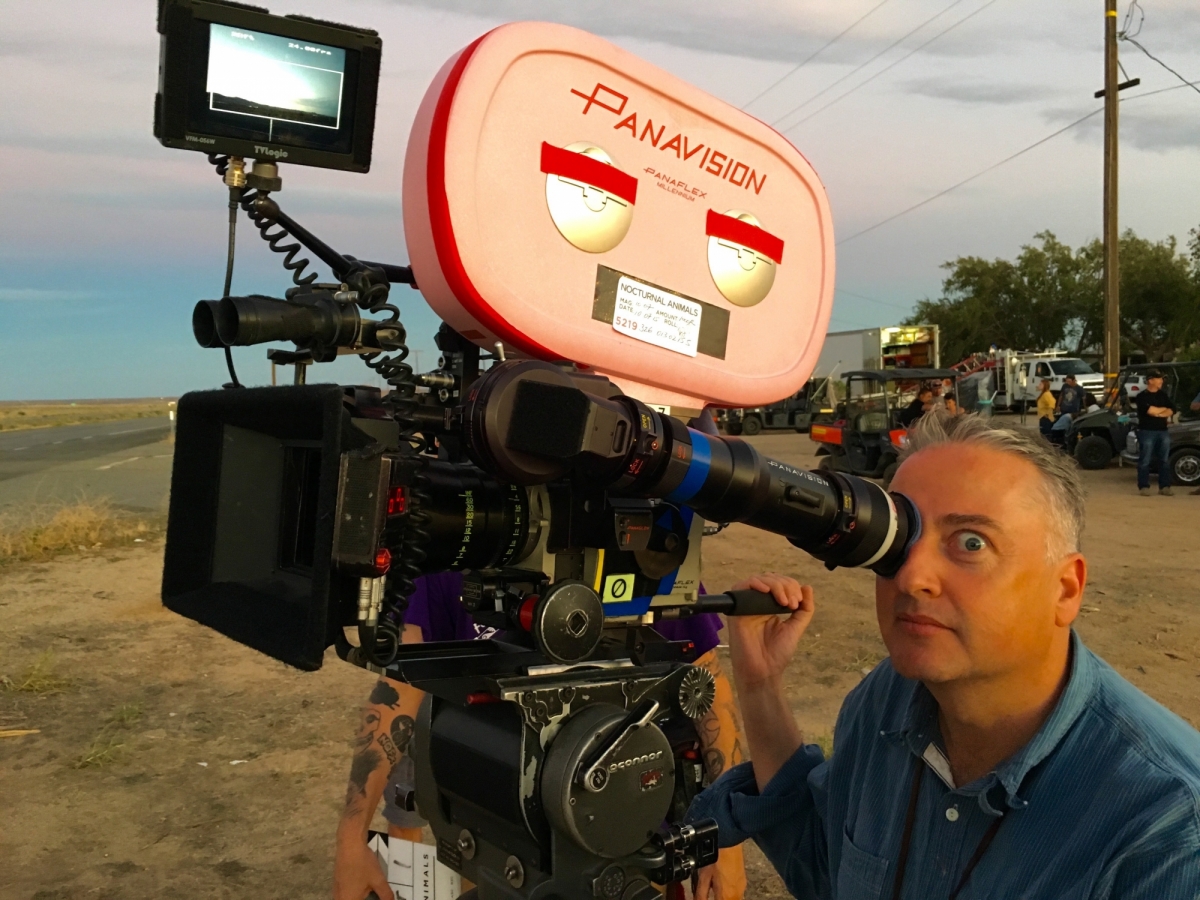
Camera catches Seamus McGarvey BSC ASC in action on "Nocturnal Animals." Photo by David Emmerichs. (Focus Features/Universal Pictures)
As if that was not enough, the indefatigable McGarvey then embarked on Chloë Sevigny’s cute short film Kitty. Adapted by the director, from Paul Bowles’ four-page story of the same name, it was shot to Sevigny’s financial advantage with Panavision’s camera movement configured for 3-perf, using the 200T and 500T short ends left over from Nocturnal Animals, and Panavision Primo lenses once more.
Kitty is the tale of a young girl who turns convincingly into a cat. Each day, as she looks at her reflection, she sees whiskers appear and grow longer, then a soft fur covers her skin, followed by pointed ears and soft pads on the palms of her hands and soles of her feet.
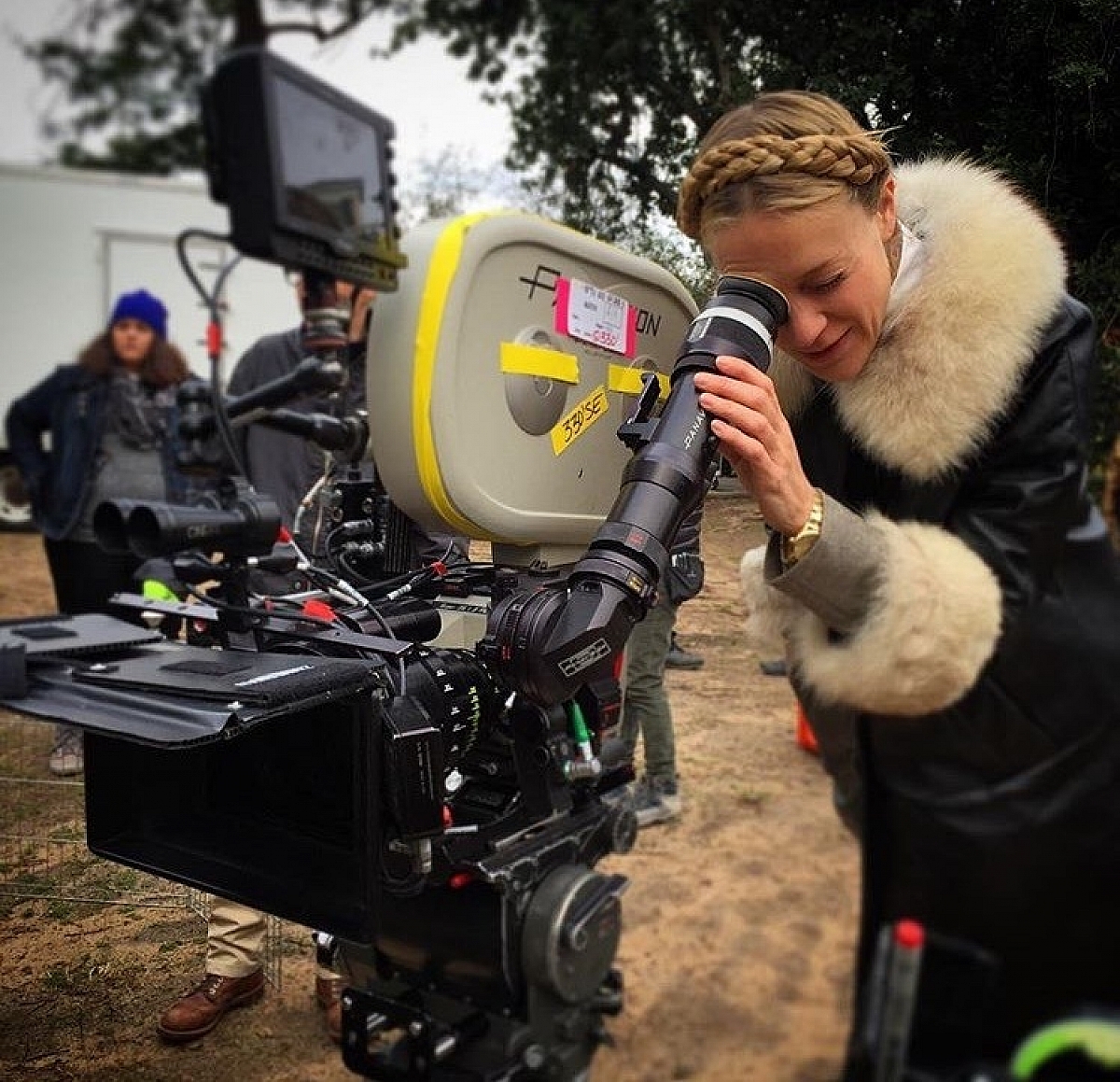
Director Chloë Sevigny looks through the eyepiece on set of short film "KITTY". Photo: Seamus McGarvey
The atmospheric short was shot in a characterful mansion in Pasadena, in which McGarvey jokes, a cavalcade of ghosts and spooks would not have looked out of place. The transition from female to feline was achieved in-camera, with the gradual addition of physical effects and prosthetics.
“We wanted to create a slightly nostalgic, dark-but-sweet, inner dreamworld of the little girl,” he explains, “so I smeared grease around the edges of an optical flat in front of the lens to give a Daguerreotype gauze to the visuals. We had a limited amount of 200T, which I used for the daylight exteriors, but ran out sooner that we imagined.
“But here comes the sheer beauty of film. We were able to shoot the remaining exteriors, using the 500T with NDs, plus all of the interiors with the 500T unfiltered, and after the color grade it all matched perfectly.”
He concludes: “People choose film for many good reasons – nostalgia, the inherent value of grain and texture, but I just love how you can adapt film so easily, across so many different styles, situations and genres. Additionally, because you are composing the image through the lens, through the eyepiece, rather on a video monitor, your efforts and enterprise are more focussed and concentrated. The results rest where they belong, with the cinematographer.”